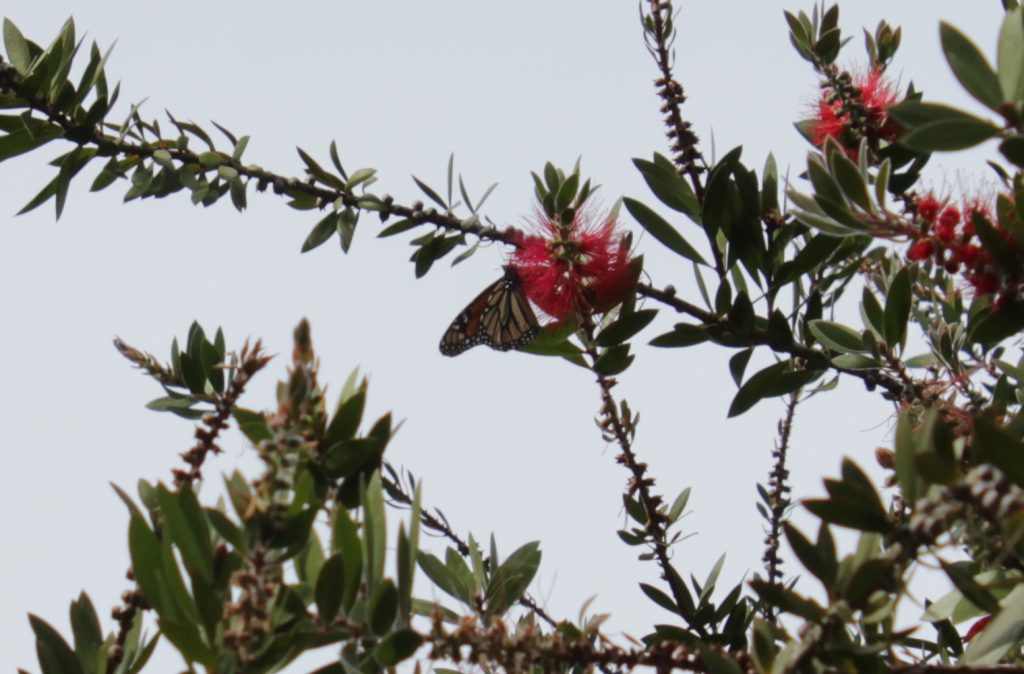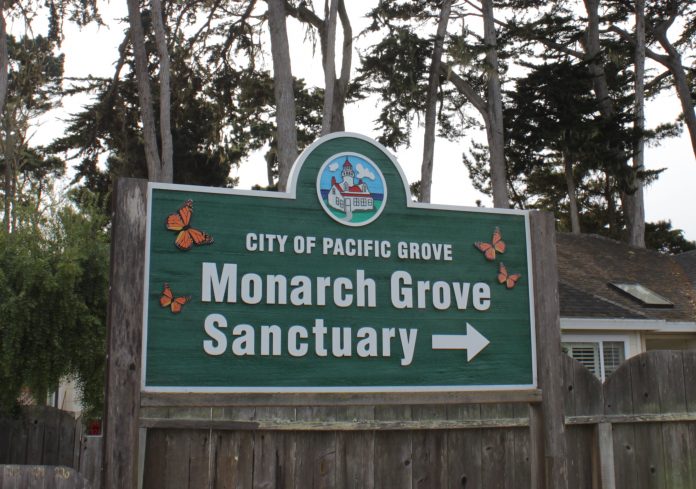October is a special month for Pacific Grove, a quaint beach town south of Monterey. The Monarch Grove Sanctuary, located in the heart of Pacific Grove, is bustling with overwintering monarch butterflies! Overwintering quite literally means to last over winter, which is exactly what the monarch butterflies intend to do with their migration through Pacific Grove.
Each year during October, monarch butterflies cluster together on branches of pine, eucalyptus and cypress trees along the California coast. Pacific Grove is such a crucial location for the monarch migration each year that it has been nicknamed “Butterfly Town, U.S.A.”
The residents of Pacific Grove are very welcoming toward the overwintering butterflies, and are also very protective of them. So much so, that they voted to create an added city tax in order to pay for the Monarch Grove Sanctuary. The sanctuary is cared for by dedicated local volunteers, and volunteer monarch docents are available in the sanctuary every day October thru February from 12-3 p.m.
According to the city of Pacific Grove, the overwintering butterflies’ flight muscles do not function properly in temperatures below 55ºF. It is for this reason, as well as to protect themselves from other natural elements, that the monarchs cluster together on tree branches. Even during the warm, sunny days, the monarchs always make their way back to the tree branches well before nightfall.
I took a trip to the Monarch Grove Sanctuary on Tuesday, Oct. 23 at around 2:30 p.m. The weather was warm, the sun was shining and there was no wind. It was a perfect time for the monarchs to feed on their various nectar options throughout the area. Needless to say, I did not bear witness to the fantastic monarch butterfly clusters that I have heard so much about, but I did see a few monarchs fly around collecting nectar from various vegetation throughout the sanctuary.

During my visit to the sanctuary, I overhead a local volunteer monarch docent speaking to a group of tourists about how the big flocks of monarchs are attracted to Andrew Molera State Park this year, rather than primarily coming to the sanctuary to migrate. He speculates that this is because much of Big Sur was inaccessible due to the landslides last year, and Andrew Molera State Park in particular was closed for a period of time. The docent stated that the reestablishment of vegetation and lack of crowds are more attractive to the butterflies, so they may be choosing to collect their nectar there, instead.
Wherever you decide to go and spectate the monarchs, the best time of day is between 12-3 p.m., because viewers are most likely to see the butterflies both flying around collecting nectar, and clustered together high up in the trees. When clustered, the butterflies can look like dead leaves, so it may be wise to bring binoculars and have patience as you scan the treetops. For more information about the monarch migrations, please visit the Pacific Grove Museum of Natural History website.

